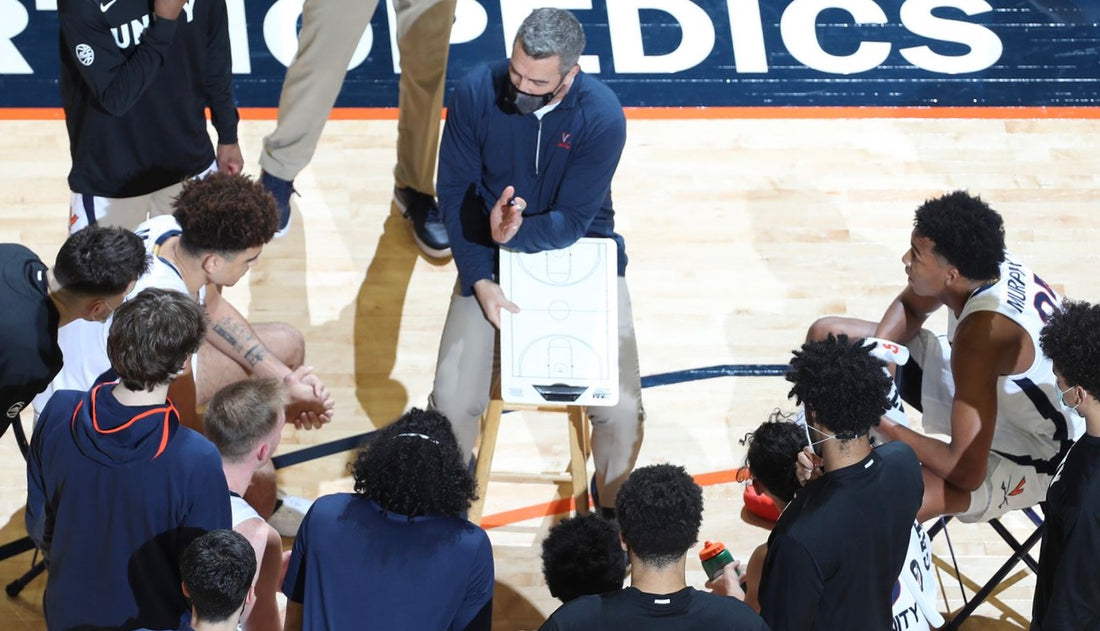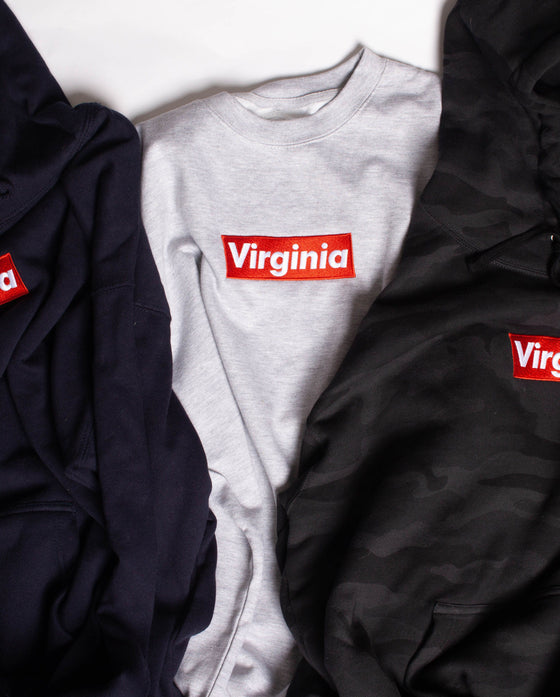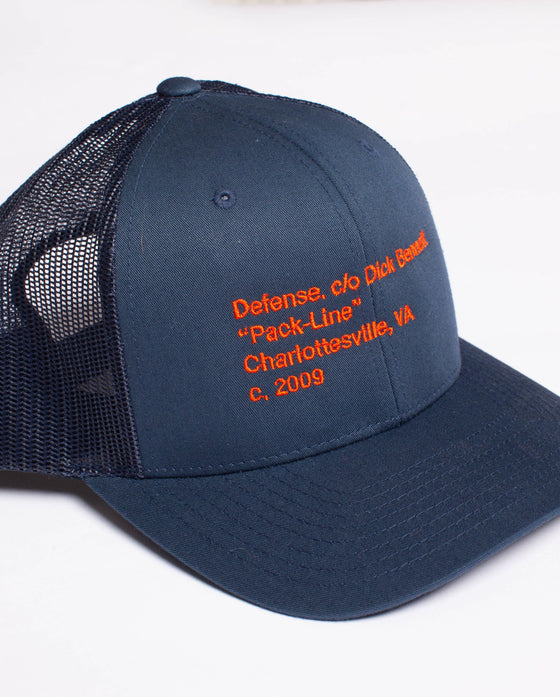The Limiting Factors UVA Basketball Must Overcome This Season

Let’s not get it mixed. This is a good basketball team, a very good team in fact. The high ceiling performances we witnessed against teams like Syracuse and Clemson weren’t illusions. The opponents may have been worse than previously thought, but that doesn’t discount the quality, high ceiling play we saw in those contests.
That said, it’s clear that there are a few limiting factors UVA has to overcome to reach its full potential.
Reliance on front court scoring and shooting
Virginia’s frontcourt of Jay Huff, Sam Hauser, and Trey Murphy is the ideal modern frontcourt. All three are shooting upwards of 42% from behind the arc on a combined 13 attempts per game.
Huff is a premier big in ball screen scenarios as his length and crazy finishing ability make him deadly off the roll. His phenomenal three-point shooting also forces teams to over help when he pops. Additionally, the Hoonicorn's development on both sides of the floor make him an underrated NBA prospect who could very well carve out a solid career as a backup center in the league.
Hauser is one of the best shooters in the country on a high volume of difficult shots. He’s grown into the Bennett offensive system and is now adept at flying off various screens and sets to hit shots with a hand in his face. He’s also ridiculous in the mid-post and is crafty beyond belief when able to go one-on-one in the midrange.
Murphy is a perfect 3-and-D wing who is phenomenal at shooting off the catch and is a savvy off ball cutter with plus athleticism that allows him to finish well at the rim and in traffic. His game off the dribble is still developing but he’s a great complementary piece who has made massive strides defensively.
That’s great, but...
The problem is that every offensive strength above is reliant on guard play creating those opportunities for those three guys. In basketball, and even more so in college basketball, frontcourt talent has less direct impact on the game because it needs to be put in favorable positions by their guards.
I’ll touch more specifically on UVA’s guard play momentarily, but while having all this firepower in the frontcourt is great and drives this offense, it also contributes to the wild inconsistencies we’ve witnessed this season because scoring and, more specifically, shooting, from big men is by and large a complementary aspect of an offense.
Additionally, because the Wahoos play their bigs on the perimeter so much and don’t emphasize crashing the offensive glass, their production of easy points is nearly non-existent. More specifically, UVA is 316th (of 347) nationally in offensive rebounding rate.
While the lack of emphasis on the offensive boards is not uncommon among Bennett teams, this team in particular has generated fewer second chance opportunities because of the necessity and value of playing their big men on the perimeter. That’s perfectly fine but it increases the reliance on those bigs making those shots.
On top of that, the spacing from the frontcourt and the finesse skill sets of these three players means that they aren’t generating many free throws. In fact, the ‘Hoos are 342nd in free throw rate for those very reasons along with the fact that the guards are preoccupied with feeding the frontcourt rather than looking to get to the rim themselves. Again, while a higher free throw rate would absolutely be beneficial in sustaining UVA’s offensive efficiency, it’s not necessary if the frontcourt players make their three-pointers.
Unique guard play
That said, issues arise when opponents recognise this and make the adjustment to press out on the bigs, run them off the line, and play off the guards to force them to be the shooters.
Speaking of the guards, with both Kihei Clark and Reece Beekman in the backcourt, Virginia has two point guards capable of making plays for players around them. As we’ve seen in games against Syracuse, Clemson, and others, when these two are able to penetrate opposing defenses and then find shooters on the perimeter, this offense can be ridiculously efficient.
Clark is a good decision maker off of ball screens and has developed great chemistry with Huff. His finishing at the rim has much improved this season (55.1% this season compared to 42.3% last season) and does well finding shooters on the perimeter as he’s limiting turnovers (19.8% turnover rate this season compared to 26.1% last season) much better than he did last season.
As Clark’s heir apparent, Beekman has filled a void alongside his predecessor in the backcourt. Despite a fairly low usage rate (14.2% on the season), he’s played his role well as he looks to create opportunities for his frontcourt teammates and work as a disruptor and ball stopper defensively.
However, while each player is gifted individually, the pairing of the two can be problematic. Since neither of them are exactly high volume three-point shooters, teams began sagging off of them back in late-January which has made attacking the interior and then feeding the perimeter difficult.
Additionally, since they are both pass-first point guards who can struggle to create their own shots, opponents have found success switching every screen that UVA sets in their offense which has the Virginia offense in this three game slump of sorts.
Reliance on schemes nullified by switching
But, while the last three contests have been far from pretty, the Virginia Tech loss back on January 30th is really where the switch flipped for the Wahoo offense.
Since the loss to Gonzaga, UVA had relied on their three-man motion triangle offense to generate a higher volume of touches for Jay Huff and Sam Hauser both on the perimeter and in the post.
For the first seven games of ACC play that offense was successful as the ‘Hoos put up an elite 1.19 points per possession. Granted, one of those games came against Syracuse’s 2-3 zone with another against Boston College’s matchup zone. Nevertheless, UVA actually employed similar tactics to beat those defenses that they did against traditional man-to-man.
But, as did UVA’s seven game win streak, that success came to an end when the ‘Hoos traveled to Blacksburg. In that game, Head Coach Mike Young had his players switch every screen set against the three-man offense which negated the effectiveness of that offense because Tech has the individual defenders who were capable of switching and guarding off-position.
While Virginia bounced back and rattled off four straight wins after that loss, the offense wasn’t the same. As teams followed the Hokies’ switching formula against the triangle offense, the ‘Hoos went back to a heavier usage of their traditional mover blocker offense but struggled at times without shooters in the backcourt to be a threat coming off the pin down and flare screens of that offense.
Last three games
Then, the FSU Seminoles — a team known for switching one through five — brought the issues this team has had against switching defenses into the light. While Beekman and Clark are both very good individual point guards capable of running an offense, their pairing proved problematic because FSU negated any advantage gained off of on-ball or off-ball screens which meant they forced UVA to beat them one-on-one.
While the guards struggled to beat bigger players off the dribble, since the UVA big men are most valuable when playing on the perimeter and stretching the floor it’s difficult to exploit the matchup advantages in the paint. Huff and Hauser can both shoot over smaller players in the post. But neither of their game’s is predicated on physicality.
Those same problems persisted against Duke and N.C. State as each team employed similar tactics to FSU.
Now, looking back on the eight games since UVA’s seven game win streak to start ACC play, the raw offensive efficiency has dropped off from that elite 1.19 points per possession to just 1.01 points per possession through the last eight contests.
What does this tell us?
Again, placing blame for these offensive struggles on any one player or the scheming itself would be ill-advised. Rather, these are issues that come with the makeup of the roster. There’s not a go-to scorer in the backcourt to provide relief for Clark and Beekman. That heightens the reliance on the bigs. Yet, because the bigs are better in a more modern offense their shooting is where they’re most valuable. Unfortunately, shooting is much less reliable than a go-to inside game.
Nevertheless, this is still a very talented offense. Opponents' adjustments have just stunted the offense a bit of late by exploiting its weaknesses and negating its strengths. Unfortunately there’s no easy fix. If there was, the coaching staff would’ve already adjusted accordingly. That said, because of the talent and the unique skill sets on this roster, there’s still great potential for this offense to claw its way out of its recent funk.
How will that happen? That’s a question for Tony Bennett.
A lack of ‘plus’ defenders
While the offense has experienced some struggles of late, the defense is actually just about where it needs to be. UVA has, for the most part, solved the problems they had early in the season. Specifically, the 'Hoos are much better guarding ball screens and have dispelled any qualms regarding their inexperience in the system.
Sam Hauser and Trey Murphy in particular have improved immensely since the beginning of the season. Murphy is becoming a future lockdown defender on the wing. Meanwhile, Hauser has learned his role and is comfortable playing as the power forward in the UVA defense.
At this point there aren’t any bad defenders in this rotation. All are very capable and there are a couple of phenomenal on-ball defenders in Beekman and Clark.
However, this defense is a bit limited by the lack of plus defenders in the frontcourt. Perhaps lack is the wrong word though as neither Huff or Hauser are weaknesses. Rather, they’re not the traditional UVA defensive frontcourt. Fortunately, they make up for it offensively.
Because neither Huff or Hauser is the Diakite, Mitchell, or Atkins defender, that limits Virginia's defensive ceiling. Unfortunately, that only furthers the necessity that the offense is elite.
It’s an odd balance that, once again, is hard to be critical of — it’s just what this roster is. Fortunately, the defense has likely hit its peak this season. Unfortunately, the defense has likely hit its peak this season.
Big picture
Looking at the big picture for this squad, there’s high potential for a postseason run. An ACC Tournament title is very much on the table as is a run to the Sweet Sixteen or further. That’s how talented this group is. When a team has elite shooting and a sound defense, anything can happen.
UVA is undoubtedly vulnerable against athletic teams that can survive by switching defensively and are capable of making tough shots on the other end. That’s not new for this program, those vulnerabilities have just been exacerbated by a unique roster.
Three straight losses are never fun, but it is by no means time to throw in the towel. These limitations are hindering but by no means debilitating for a team and a coaching staff like this.
Bring on March.
(Image - UVA Athletics)


